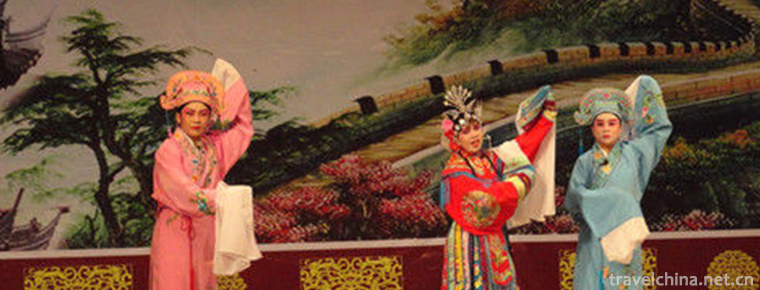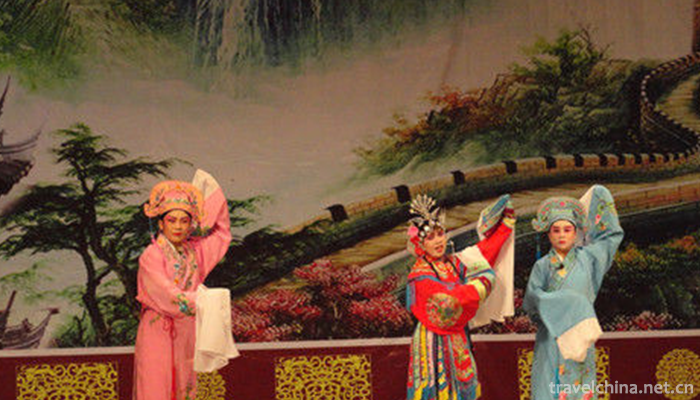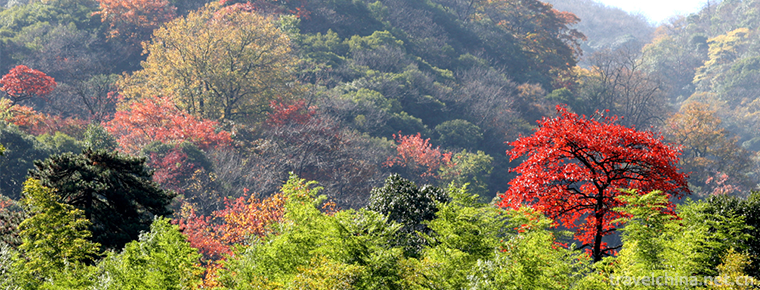2018-12-08

- By ChinaWiki.net
- Chinese Edition
- 2019-04-25
Taoist Drama
Taoist sentiment is a category of traditional Chinese folk art. It originated from Taoist songs such as Chengtian and Jiuzhen in Tang Dynasty. The Southern Song Dynasty began to accompany with fishing drums and cylindrical boards, so it is also known as sentimental fishing drums. By the Qing Dynasty, Tao and sympathy combined with folk music in different places formed various forms of homology and divergence, such as Taikang Tao, Hongdong Tao, Northern Shaanxi Tao, Jiangxi Tao, Hubei Yugu, Sichuan Zhuqin and so on. Taoist sentiment is mainly composed of singing, supplemented by speaking. There are sitting singing, standing singing, singing, counterpart and other forms of performance.
Historical evolution
Taoist sentiment originated from the rhyme of Taoism in Tang Dynasty, which is a kind of poetry and praise. After the Song Dynasty, Cipai and Qupai were absorbed and evolved into a new classical rhyme, also known as Tao Song, sung in folk sermons. With fishing drum, simple board accompaniment, similar to drum words. Later, the poetry and praise style of Tao was mainly popular in the south, and it was the rap and singing style between the songs and the white ones. The opera style of Qupai style was popular in the north, and developed into the opera style in Shaanxi, Shanxi, Henan and Shandong. The opera style was mainly composed of playing children, soap-roe robes, and Qingjiang Yin. Qin opera and Gong-Drum and singing style were adopted, gradually forming the Tao opera of different parts of the country. 。 There are four kinds of operas: Taoist drama of ascending immortals, drama of cultivating virtues and persuading good people, drama of folk life, historical story and drama of legendary public cases. Some places are called fishing drums or bamboo piano.
In Shaanxi, there are two kinds of Shaanxi shadow play, one is the Eastern Tune and the other is the Western Tune. The former is prevalent on both sides of the Yellow River, while the latter is prevalent in northern Shaanxi and Inner Mongolia. In different areas, it has formed such sub-operas as "Northern Daoqing", "Shangluo Daoqing", "Ankang Daoqing" and "Xiliangdiao". Its singing style is characterized by the harmony of all people to enhance the atmosphere where the voice falls and drags. There are more than 200 plays, all of which are handed down by the old artists. Some of them have strong religious color.
Taoist sentiment is the predecessor of fishing drums. Taoist sentiment, also known as the "yellow crown body" (yellow crown may refer to the costume of Taoists), is the Taoist sentiment sung by Taoists. It is widely traveled, too empty to express feelings. It is called "Taoist sentiment" because of the thought of eating, dewing and clothing. The Tang Dynasty may have already had Tao songs, while the fishing drum and bamboo slips began in the Song Dynasty. Although Tao sentiment appeared early, few works have been handed down. Only ten passages of Zheng Banqiao's Tao sentiment can be seen. (Generally speaking, only the above five passages are included in the singing.) And Xu Dachun's feelings in Huixi Road. This kind of music has declined and will be extinct. Since the Republic of China, there has been no material left for us to learn. This art has been followed by nobody.
According to legend, there were seventy-two Divertimentos and more than one hundred tunes. Now only thirteen Divertimentos and ninety-six tunes can be collected, and their singing style is a combination. It uses some tunes of the Zhugong tunes to intertwine and form a large-scale aria with layers. Each divertimento has six different tunes: positive, negative, peaceful, bitter, grabbing and tight. The aria is composed according to the need when it comes. For example, the structure of "playing with children" includes six tunes: playing with children, playing with children in reverse, playing with children in peace, playing with children in distress, playing with children in rush and playing with children in urgent need. This "positive, negative, peaceful, bitter, rush and tight" has different contents: "positive" means singing in a positive tone, and the tune sung in a positive tone is generally "Shang" tone; "negative" means singing in a negative tone, and the tune sung in a negative tone is generally "Hui" tone; "peaceful" means general normal mood; "bitter" means sad and desolate mood; both are sung in a positive tone; "tight" means singing in a negative tone. It means that the structure of the aria is compact, and "grabbing" means that the structure of the aria is joyful, light and similar to the speed of "grabbing". In addition, Taoist sentiment also skillfully drew lessons from the "intermediary board", "flowing water", "rolling white" and Kunqu opera singing tune in "Jin Opera", which made up for its own shortcomings. The "fishing drum" in music accompaniment is a special instrument of Tao and Qing. Its instruments in Wenwuchang are roughly the same as those in Bangzi Opera.

Ask a Question
Your email address will not be published.



0 Questions